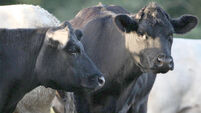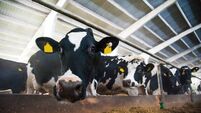Leptospirosis ‘bigger threat’ to humans than brucellosis
Fergal Morris, veterinary adviser with Schering Plough Animal Health, said that leptospirosis infection is becoming a bigger threat to humans than brucellosis.
A significant proportion of infections reported in recent years are due to direct contact with infected cattle. Farmers, veterinary practitioners and abattoir workers are most at risk.
“In 2004, a total of 15 cases of human leptospirosis were reported to the Health Protection Surveillance Centre, compared to just five cases of brucellosis.
“While leptospirosis is a notifiable disease, the total of 15 incidences reported during 2004 is regarded as an underestimate of the level of infection in humans, ” he said.
“Many medical experts feel that a substantial number of cases are misdiagnosed or unreported.
“In fact, one scientific study has shown that only one quarter of cases of leptospirosis is being notified,” Mr Morris added.
Leptospirosis in humans is a debilitating disease causing flu-like illness with muscle pain and headaches, leading in some cases to meningitis.
While it can be effectively treated with antibiotics, depression and listlessness can persist for some time.
As a bacterial infection, it affects pregnant cows and is widespread in dairy herds.
A survey carried out by Teagasc and UCD showed that four out of every five dairy herds in the country are infected.
Symptoms include abortions, usually in the last two months of pregnancy, as well as the birth of weak calves and sudden drops in milk yield.
“While the full extent of leptospirosis infection has not been measured in beef suckler herds, reports from veterinary practitioners suggest that incidence levels are on the increase. The symptoms are the same as in dairy cows,” according to Mr Morris.
He said that vaccination with a product such as Leptavoid H was the only way to ensure animal immunity to the disease and to eliminate the risk of human infection.
“All female animals destined for breeding should receive a primary vaccination at six to nine months of age followed by a booster injection four to six weeks later.
“On most farms, an annual booster vaccination is then usually sufficient to maintain immunity.
“All bought-in breeding stock should be treated with an appropriate antibiotic and vaccinated before being mixed with the herd. ”
Special attention should be given to bulls, Mr Morris warned, as they can be major sources of infection.










